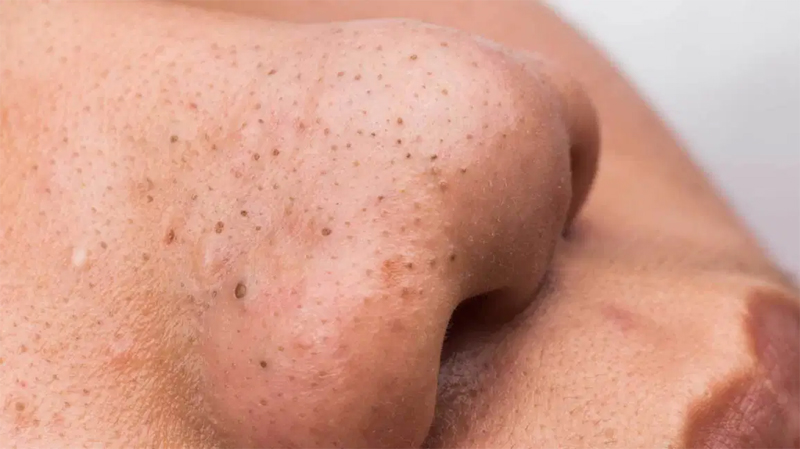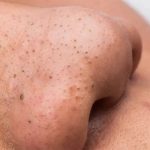A pimple that has darkened at the top due to exposure to the air. Blackheads typically develop as the plug of greasy material (keratin) blocking a sebaceous gland is exposed over time to oxygen in the air. Blackheads are often a characteristic of acne and usually appear on the face, chest, shoulders, and back.
A plug formed of fatty material (sebum and keratin) in the outlet of a sebaceous gland in the skin. Oxidation of the keratin in the blackhead is the cause of the black coloration.
A blackhead, also known as a comedo, refers to a partially solid plug consisting of keratin and sebum that obstructs the opening of a sebaceous gland in the skin. These black-capped plugs commonly occur on the face, chest, shoulders, and back, and their formation is associated with increased activity of the sebaceous glands. Blackheads are frequently observed in various types of acne and are among the characteristic features of this skin condition. Proper skincare practices, such as regular cleansing and exfoliation, along with appropriate acne treatments, can help manage and prevent the formation of blackheads. Consulting with dermatological professionals can provide further guidance on managing acne and maintaining healthy skin.
A non-inflammatory acne blemish containing an accumulation of excess oil and dead skin cells is referred to as a blackhead. Blackheads are alternatively known as open comedones due to the fact that the skin’s surface remains unobstructed.

